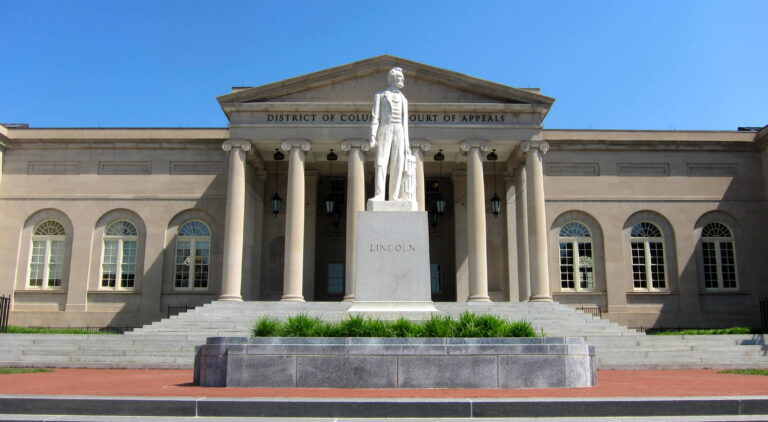
Nicholas Anway is a student at Harvard Law School.
In today’s news & commentary, the New York Times profiles a leading Starbucks union organizer, firings at SpaceX raise retaliation concerns, labor shortages at Amazon and construction companies present challenges nationwide, and the Uyghur Forced Labor Prevention Act takes effect.
The New York Times published a profile on Jaz Brisack, the barista and Rhodes Scholar who has been organizing with co-workers to unionize Starbucks stores across the country. When Brisack joined Starbucks in late 2020, “not a single one of the company’s 9,000 U.S. locations had a union.” In December, her Buffalo store became the first corporate-led Starbucks in the U.S. to unionize. Brisack and other Starbucks employees have since organized successful union elections at 150 other stores, and “more than 275 have filed paperwork to hold elections.”
SpaceX “likely violat[ed] U.S. labor law” when it fired a group of employees involved in publishing an open letter to the company’s leaders “calling for stronger anti-harassment policies” and “a more restrained Twitter presence” from CEO Elon Musk. The Verge reports that the fired employees would have a strong retaliation lawsuit if they chose to file with the National Labor Relations Board. That’s because SpaceX president Gwynne Shotwell sent employees a note after the firings in which she “made clear that the employees had been terminated specifically because of their involvement with the letter, which she characterized as ‘overreaching activism.’” According one legal expert, “[t]his could very much be seen as retaliation for speaking up.”
A leaked memo from Amazon’s internal researcher warns that the tech giant may “run out of people to hire in its US warehouses by 2024.” Unsurprisingly, the company’s sky-high turnover rate is a significant driver of its worker shortage. According to Recode, Amazon “churns through the equivalent of its entire front-line workforce” every year. The memo predicted labor shortages to be especially severe in Phoenix, Arizona, the Inland Empire region of California, Memphis, Tennessee, and Wilmington, Delaware. In Phoenix, the turnover rate at Amazon warehouses “grew from 128 percent in 2019 to 205 percent in 2020.” The company’s warehouse employee retention challenges have been linked to its emphasis on “worker productivity over just about everything else,” and the alarming rate of injuries in its warehouses, as I describe in another post.
Publicly funded construction projects are also facing labor shortages nationwide, the Wall Street Journal reports. Representing more than 27,000 construction companies, the Associated General Contractors of America cited added labor costs and other inflationary factors as driving a 20% increase in the price tag for such projects. As $1 trillion in federal funding from the bipartisan infrastructure law begins to kick in, labor shortages are obstacles for construction contractors and the Biden Administration alike. “We got the funding,” Transportation Secretary Pete Buttigieg said. “Now we have got to make sure that we have the raw materials, the technical capacity and the workforce to actually get it done.”
Finally, the Uyghur Forced Labor Prevention Act goes into effect tomorrow. The law bans products that were produced in Xinjiang from entering the United States, unless importers with ties to the region can produce documentation showing that the products and the raw materials used to produce them were not made with forced labor. “The apparel, food and solar industries have already been upended by reports linking their supply chains in Xinjiang to forced labor,” the New York Times explained. The global battery industry could be next. China “processes 50 to 100 percent of the world’s lithium, nickel, cobalt, manganese and graphite, and makes 80 percent of the cells that power lithium ion batteries.” These raw materials are often processed through complex, opaque supply chains as they are turned into automotive parts like electric car batteries, electronics, and other products. The broad array of goods with ties to Xinjiang presents political and administrative challenges for U.S. regulators.






Daily News & Commentary
Start your day with our roundup of the latest labor developments. See all
December 22
Worker-friendly legislation enacted in New York; UW Professor wins free speech case; Trucking company ordered to pay $23 million to Teamsters.
December 21
Argentine unions march against labor law reform; WNBA players vote to authorize a strike; and the NLRB prepares to clear its backlog.
December 19
Labor law professors file an amici curiae and the NLRB regains quorum.
December 18
New Jersey adopts disparate impact rules; Teamsters oppose railroad merger; court pauses more shutdown layoffs.
December 17
The TSA suspends a labor union representing 47,000 officers for a second time; the Trump administration seeks to recruit over 1,000 artificial intelligence experts to the federal workforce; and the New York Times reports on the tumultuous changes that U.S. labor relations has seen over the past year.
December 16
Second Circuit affirms dismissal of former collegiate athletes’ antitrust suit; UPS will invest $120 million in truck-unloading robots; Sharon Block argues there are reasons for optimism about labor’s future.